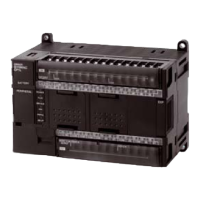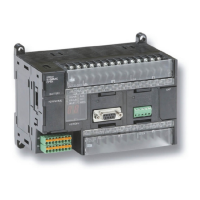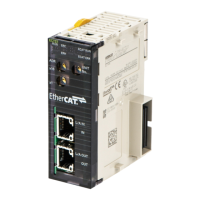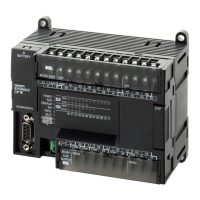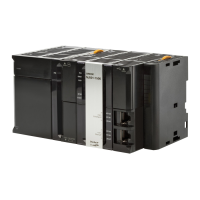76
CPU Units Section 3-1
3-1 CPU Units
There are four different CPU Units. These are listed in the following table. The
four models can be thought of in two groups: Those which support Inner
Boards and a Communications Unit, and those that do not. There are also dif-
ferences between the CPU Units in program capacity, I/O capacity, the avail-
ability of EM, and the availability of a built-in RS-232C port.
Note I/O capacity = No. of input points (
≤ 256) + No. of output points (≤ 256).
CPU Unit Components
Model
number
I/O
capacity
(points,
see
note)
Program
capacity
(Kwords)
CPU
Unit
built-in
input
points
DM
capacity
(Kwords)
EM
capacity
(Kwords)
Built-in serial commu-
nications ports
Inner
Boards
Communi-
cations
Unit
Peripheral
port
RS-232C
port
CQM1H-
CPU61
512 15.2 DC: 16 6 6 YES YES Supported Supported
CQM1H-
CPU51
7.2 6 None
CQM1H-
CPU21
256 3.2 3 Not
supported
Not
supported
CQM1H-
CPU11
No
Peripheral Port
Used to connect to Programming De-
vices such as a Programming Console or
a computer running CX-Programmer.
Also supports Host Link and no-protocol
communications.
RS-232C Port (except CQM1H-CPU11-E)
Used for Host Link, no-protocol, 1:1 Data
Link, or NT link (1:1 mode) communications
with external devices or other PCs.
LED indicators
Inner Board Slot 1 (left slot)
Use this slot to mount a High-speed Counter Board,
Analog Setting Board, or Serial Communications Board.
Inner Board Slot 2 (right slot)
Use this slot to mount a High-speed Counter Board, Pulse
I/O Board, Absolute Encoder Interface Board, Analog Setting
Board, or Analog I/O Board.
Battery Compartment Cover
Open this cover to access the battery,
DIP switch, and Memory Cassette.
Inner Board Covers
Remove these covers when
mounting Inner Boards.
16 Inputs Built into CPU Unit
Connector
Add on Units horizontally
by joining connectors.
Sliders
Used to secure adjacent Units.
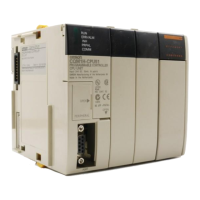
